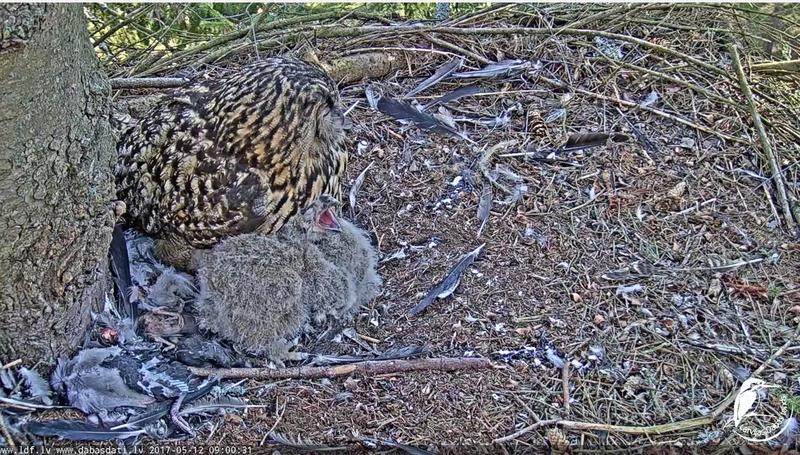Screencap from webcam IceAge, LK forum
Translation Liis
Cold mornings make the owlets search for warmth
Eagle owl Kassikakk Bubo bubo
The two older eagle owl chicks were hatched on the night towards April 23rd, the youngest nearly 4 days later, and the difference in size is visible in camera view. We have already told about it: this week the nest life of the eagle owls is lit up at night too. The night-time active adults move in quest of prey then.
A quite normal nesting; the eagle owls most frequently have 2-3 chicks in the nest. Nest life lasts a little more than 5 weeks – thus we can expect the departure of the partly fledged owlets in the last days of May.
The development of the large birds is slow. They will not be fully fledged until three weeks later and the adults may help the young owls with food even in September.
Eagle owls are stationary birds, and they remain the year round in the same ochre-coloured breeding as well as eclipse plumage. The weight of the male may be a couple of hundred grams over a kilo and of females on average 3 kilos. The wing span is up to
But why is the camera nest in a tree when they generally have it on the ground in a light forest? This breeding locality in Kurzeme is known since 1998 but for several years the breeding on ground did not succeed, usually because someone had plundered the nest (as the main culprits the wild boars may largely be pointed out) or something else happened. In
The situation of eagle owls in



